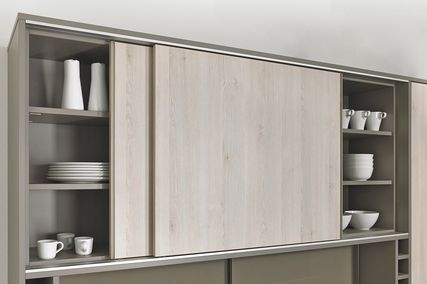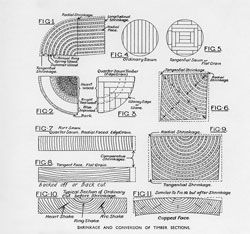
“The shrinkage and conversion of timber sections”, one of many technical pieces to be published in the journal’s pages. Architecture, June 1934.
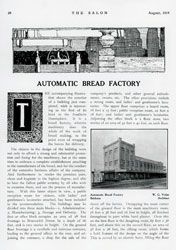
The obsessive enumeration of The Salon’s review of the Automatic Bread Factory, Brisbane. The Salon, August 1914.
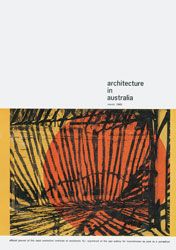
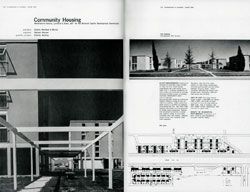
The 1960s saw a focus on ‘objective criticism’. Dramatically photographed buildings were written about in a straightforward manner which emphasized the competence and professionalism of the architect. Ancher Mortlock and Woolley’s Community Housing, Architecture in Australia, March 1965.
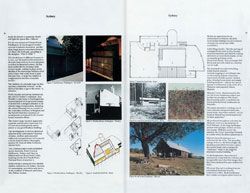
Norman Day’s “Sydney’s haut gout: the high flavoured taste”, of January 1982, contained rather more opinion and rhetorical flourish: “the newest work of the Sydney architects records a group identity where conviction is a fleeting thing and the art is as much one of gamesmanship as anything else.” Architecture Australia, January 1982.
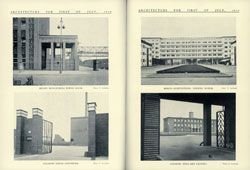
“Lessons from Modern German Architecture”, Eric Garthside’s report from his time as a travelling scholar. Architecture, July 1934.

The first in Morton Herman’s “Comparison of Architectural Solutions”, which drew on his travels to compare building types from Europe and Australia. Architecture, July 1937.
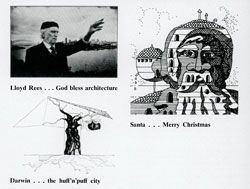
Catchy captions from the contents page of Vincent Smith’s first issue. Architecture in Australia, December 1975.
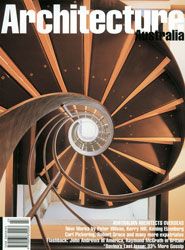
“Davina’s Last Issue – 33% More Gossip”. Architecture Australia, May/June 2000.
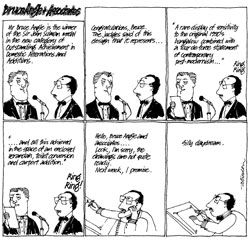
Geoffrey Atherton’s “Bruce Angle” cartoons accompanied the dry wit of Tom Heath’s erudite editorials of the 1980s.
“Young writers often suppose that style is a garnish for the meat of prose, a sauce by which a dull dish is made palatable.” E. B. White, The Elements of Style.
Many architects would surely make a similar supposition to that noted by E. B. White in his classic text on writerly “voice” and tone – that architectural writing is first and foremost writing aboutarchitecture, rather than writing being an end in itself.
But just as White argues that “[s]tyle has no such separate entity; it is nondetachable, unfilterable”, so we might explore style in architectural writing. What follows is an eclectic, fragmentary and subjective look at the modes, types and tones of writing published in Architecture Australia and its precursors over the past century.
The tone of the magazine has been affected by different editorial aims, and by the publication’s role in the profession as conceived by the Institute. Indeed, the overriding influence on the “voice” of the journal has been its role as the official journal of the RAIA and its predecessors. The responsibility that this carries – to produce a true, authoritative and sober historical record – is the single most important factor in distinguishing the tone of this journal from the other publications which have come and gone in the same period. Not that there have been no rhetorical pyrotechnics or flashes of adjectival colour. To choose some relatively recent examples: Norman Day, in January 1982, describes the work of Bruce Eeles as “sinewy”, and an Andrew Metcalf housing estate as “refusing to wear a facile badge”. Philip Goad, in 1991, ponders the architectural question of “how much leg to show”, and describes the then current dilemma of Melbourne architecture as “teetering between primness and irascibility” while Ian McDougall criticizes a type of office building as being an “expedient camel”.
John Macarthur, in 2001, finds the National Museum of Australia to have a “strident exuberance” and “ecstatic pessimism”. However, the overriding tone is one of serious and considered discourse. This makes the subtle differences between its modes of writing all the more rich.
In contemporary culture the word rhetoric often has negative connotations – “empty rhetoric” implies inflated, bombastic pronouncements – but it also retains the older sense: rhetoric as speech or writing that sets out to persuade an audience of a position.
The practice and analysis of rhetoric is also an ancient discipline, elevated at times to an art form. And while the study of rhetoric is primarily concerned with modes of “appeal” (logical, emotional or authoritative), it is never really possible to divide the form from the content, the medium from the message, the style from the substance. Thus rhetoric was, in ancient times, very often a study in decorum. It was concerned with what could and should be said, as much as with how the author might go about saying this. It is also a study of what Roland Barthes called the pleasure of the text – of cadence and rhythm, the richness of words, the elegance of structure and the endless possible permutations of language.
In all of these senses, rhetoric is relevant to architectural criticism, which sets out to argue the case for a particular judgment of architectural merit and to persuade others. But what is striking about the rhetoric in Architecture Australia across the past 100 years is the mildness of this attempted persuasion. In the vast majority of cases, the tone of the journal has been measured, moderate and gentlemanly, as though it would be unseemly to make too great an effort to convince. While this has been taken as a sign of weakness by some detractors, as the sign of an immature or overly meek critical culture, it can also be read as an appropriate level of caution, a slow movement towards judgment and an awareness of the contingencies and complexities of architectural practice.
One way this “safe” path has been pursued is through strictly technical writing.
Many articles have dealt with professional and technical matters: the characteristics of materials, problems of construction or detailing, and dealings with regulatory bodies.
Of course, an apparent lack of style is a style in itself. Such articles mark fundamental changes in the practice of architecture and many are now historical curiosities, recalling lost or redundant bodies of knowledge and technique. For example, in the early issues there was an notable attachment to enumeration and measurement. A review of an “Automatic Bread Factory” in Brisbane, published in The Salon of August 1914, notes that “[t]he general design is of a substantial character, adapted splendidly to its purpose, and these magnificent premises having a total frontage to Brunswick Street of 145 feet, and to John Street of 165 feet, constitute a fitting tribute to the enterprise of the company”. The reader is then informed of the five electrical motors that drive the plant, along with their relative horse power; the total number of metal filament lamps (eighty); the radiators used to even the temperature in the dough-setting room (four); and the four boilers for proving the dough, which “are fitted with 3-heats, operated by 3-point switch, giving low, medium, and high heat, and thus producing a certain amount of steam which operates on the dough as it passes through its various stages”.
The sheer banality of the list is itself revealing.Was it just this (anonymous) author, or was architectural discourse at this time ill equipped to comment on industrial architecture? Surely the building has more interest and value than as just another piece of industrial equipment? Certainly it has gained accretions of history and meaning over time, and this same building, having been through various incarnations, is now refitted as the home of Brisbane’s Institute of Modern Art.
Not all of the writing was quantitative. Another example of criticism in The Salon(or rather a “description”, by its own term) is an unsigned review of “Current Architecture” in February 1915. This makes a plaintive call for an architecture of genteel good taste: “the aim of the architect has been to produce above all things a home, fitted to its surroundings and conditions, harmonious and restful in its architecture and decoration, conveying an impression of hospitality, and free of the garishness too often displayed in modern houses.” It is easy to laugh at the writing of this period, to pick out the howlers – of cultural
cringe, of attitudes towards gender and race that seem to come from another universe, of self-importance and pomposity – but these are cheap shots. The journal was, of course, an expression of the attitudes of the time. Nevertheless, some moments stand out as genuinely bizarre. The 1929 series on “Council Doings and Mis-doings” reported the proceedings of the Council of the Institute of Architects of NSW as a kind of jolly high farce:
“What the President really said was that H. E. B. [Henry Ebenezer Budden, the newly-elected Vice-Chairman] would be ‘a Tower of Strength’ to us. Rather good that, what? Henry Ebenezer came back with some flippant rejoinder in which leaning towers had a part, and in the end, by general consent, he was accepted as a ‘Flying Buttress’.”
This seems to have been an exception. In its incarnation as Architecture, the tone of the journal was generally overwhelmingly earnest, and dominated by the collective aspiration to make architecture in Australia as good as it was overseas. The stiffness of such prose, its too-officious provincialism, is balanced by a kind of “hail-fellow-well-met” enthusiasm, a wide-eyed hope for what a “modern” architecture in Australia might be.
This contrast is most pronounced in the reports from travelling scholars, which still make compelling reading. These young men (they were inevitably men) were sponsored and sent out, to learn and bring back the best ideas and practices from the “old world”.
W. R. Laurie, presenting on his return in Architecture of January 1929 “Some Contrasting Impressions of a Travelling Student”, notes rather self-consciously that
“When an architectural student is asked to give a few remarks on travel which may give a basis for a discussion, probably the best line of procedure is to point out the most striking contrasts observed between our work here and that of architects abroad. Our country, in its state of partial development, has not yet reached the heights of architectural achievement to which older countries have been able to rise under their more favourable conditions. The value of contrasting the work of our country with that of others may be that the points of greatest divergence will show the departments in which we are capable of greatest improvement.”
Some of the later missives from these travelling scholars are fascinating for different reasons. Seen in retrospect, breezy and impressionistic observations of late Weimar Germany have a chilling quality in the looming shadow of the Second World War.
Eric Garthside reports on “The Lessons From Modern German Architecture” in Architecture of July 1934, and notes that “the words ‘Modern Architecture’ immediately send one’s thoughts flying to Germany”. The photographs he presents of powerhouses, factories and housing schemes are, indeed, startlingly modern.
Other travelling scholars were more explicitly political in their comments. Morton Herman describes, in April 1934, the difficulties encountered in drawing buildings in Italy and Germany, “both of which are under peculiar forms of government”. In Italy, he finds that “[e]ven the famous buildings sketched and measured innumerable times are closely guarded, and with the many new and interesting Fascist buildings the production of a camera is often followed by the prompt production of the gendarmerie.” Later, in Magdaburg, he is subject to a raid by the secret police, where “they insisted on going through my sketches and notes with a fine tooth comb, without appreciable result, of course.” Herman is particularly interesting because on his return he used his overseas experiences to propose a series of lessons for Australian architecture in the journal, through explicit comparisons between (generally good) European examples and (generally bad) Australian ones. These were arranged by type, such that it was possible to compare tram shelters in Sydney, Dusseldorf and Milan, and to note that
“The lesson of the tram shelters is so obvious it needs but little comment. It will be noticed that the Sydney examples have paid no attention to the disposal of advertisements, machines, clocks and signals, all of which are applied as obvious and distressing after-thoughts, giving a general untidy air that contrasts strongly with the well-thought-out and satisfying tidiness of the shelters at Dusseldorf and Milan.”
The implication is that architecture should provide a sleek, all-encompassing functional envelope, and that “tidiness” is one of the principal virtues of modern design.
This holds equally for train stations and water towers as for weekend cottages and blocks of flats, and “some of the finest architecture of our age” is achieved when “the architect and the engineer have acted together towards a common end”. Such attitudes may have been widespread in Europe in the mid-thirties, but they must still have held a revolutionary charge in Australia at that time.
So, throughout its history, the journal has reflected tensions that exist in the profession more broadly – between disparate, and even mutually exclusive, ideas about the nature of architecture. This can be generalized as a discussion between architecture as a professional service or as an art. It has extended into disagreements over what should be presented in the Institute’s official journal – whether it should publish the “bread-and-butter” work that sustains the vast majority of the Institute’s membership or the work of a small and high-profile avant-garde. The debate extends further to the kind of writing and the modes of architectural criticism that are acceptable, and particularly to questions of how it is possible to arrive at a judgment of worth.
These issues are well articulated in a series of notes published in September 1963, which present recommendations made by the Federal Council of the RAIA as “an expression of policy” for the journal. There are three, each equally telling.
- That Architecture in Australia is the official journal of the Institute and should therefore record the best work of its members and also include professional papers and significant articles.
- That the Board be reminded that the journal is published in the interests of all members of the RAIA and that articles describing buildings should be objective, treating a subject so as to exhibit the actual facts, not coloured by the feelings or opinions of the writer.
- That the Board be asked to increase the proportion of material in the journal related directly to the affairs of the Institute.
The same issue includes minutes from a discussion of the “use of the journal as a public relations medium”. One can speculate that this was related to the decrees on the content of the journal – the necessity to attribute to the architectural profession a stable and solid professional competence. This is some way from more romantic ideas of architecture as an art – here the architect is a reliable and consistent performer, who can fulfil client needs on time, on budget and without prima-donna fuss.
Expectations of the journal and the modes of writing it should support were also tested and reconfigured by the efforts to broaden its appeal and provide it with a brighter, more up-tempo look. Vincent Smith, editor in 1976, opted for a style of journalism taken from the current affairs media. New sections were introduced, such as The Column, devoted to “news, gossip or scandal” and, later, Viewpoint, a space for writers to vent their frustrations with the economic expediencies and vested interests within political processes. The angered discourse of the mid-1970s was combined with unsophisticated attempts to generate interest through attention-grabbing headings such as “How to make Money”, “How to Stop Architects From Crying and Make Everybody Happier” and “I’ll huff and I’ll puff and I’ll blow your house down said the Big Bad Wolf”.
While news, gossip and catchy headings were to re-emerge in a new graphic form in the 1990s under the flamboyant editorship of Davina Jackson, they were less a part of Tom Heath’s view of what the profession’s journal should be. Heath addressed an astonishing range of issues in his editorial essays, always delivered with a dry wit and understatement that served to underscore their serious intent. His essays on criticism – “Criticism and the Profession” in March 1985 and “Criticism and the Public” in May 1985 – remain as valid and insightful today as they were then. Heath’s editorial on “Five Traps of Architectural Discourse” of March 1982 is also a gem, and opens thus:
“There are, no doubt, those who would argue that the careless use of words is the main enemy of reasoned talk about architecture. Newspeak, fuzzphrases, buzzwords and the insidious acronym do much harm, but the harm that they do is aesthetic rather than structural. It is the fine old fallacies of reasoning, which have been with us for millennia and show as little sign of going away as the termite, which really bring down the house of intellect. Here, then, with apologies to Ruskin and Philip Johnson, is a little florilegium of poisonous weeds: the Five Traps of Architectural Discourse.”
For the record, these five traps are: the trap of definition, the trap of poetry, the objective-subjective trap, reductionism or oversimplification, and the trap of relativism.
Aside from the editorials, debate about language and discourse has often been played out in the letters pages, which, unrestrained by official imprimatur, have also provided the forum for some of the most robust prose. Among these is the fine turn of phrase of Harry Seidler’s 1982 rampage against the apparently “puerile nonsense” of Architecture Australia’s reportage of postmodernism:
“Receiving the RAIA journal I find a consistent embarrassment in recent times.It is unfathomable to me how such an obviously amateurish and painfully inept periodical can have the audacity to call itself the official journal of an institute made up of presumably erudite and visually trained professionals. It seems to have reached a climax of intellectual depravity with the January 1982 issue, which is filled with the childish aping of supposedly fashionable imported tendencies and applying them to Melbourne and Sydney!”
The letters pages have also seen recurring accusations of intellectual and architectural snobbery, excessive use of academic jargon, and wilful obfuscation. Few letters specifically commend good writing – good works of criticism are praised, but rarely their prose. But this only proves the opening point – that style and substance in writing are inextricably linked – and returns us to The Elements of Style. Aside from exhorting the young writer not to overwrite (“rich, ornate prose is hard to digest, generally unwholesome, and sometimes nauseating”) and not overstate (“a single carefree superlative has the power to destroy, for the reader, the object of the writer’s enthusiasm”) the author offers the following advice:
“Place yourself in the background … If the writing is solid and good, the mood and temper of the writer will eventually be revealed, and not at the expense of his work.Therefore, the first piece of advice is this: to achieve style, begin by affecting none.”
Source
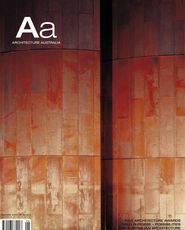
Archive
Published online: 1 Nov 2004
Words:
Naomi Stead,
Paul Hogben
Issue
Architecture Australia, November 2004





